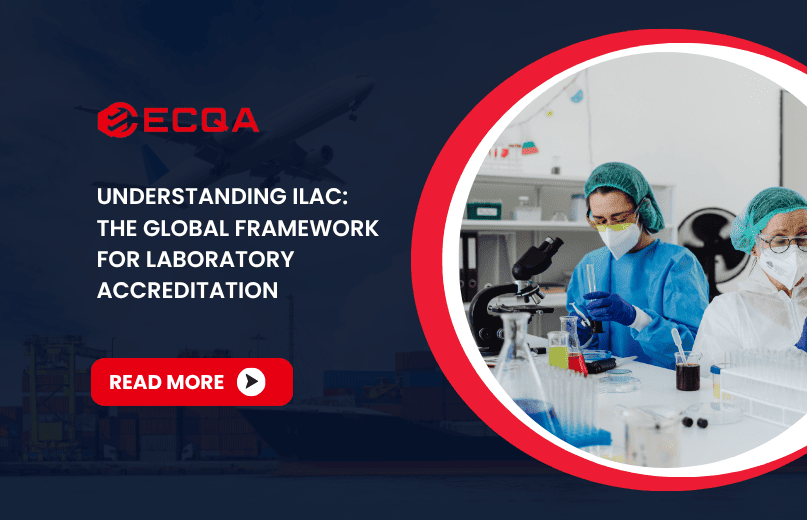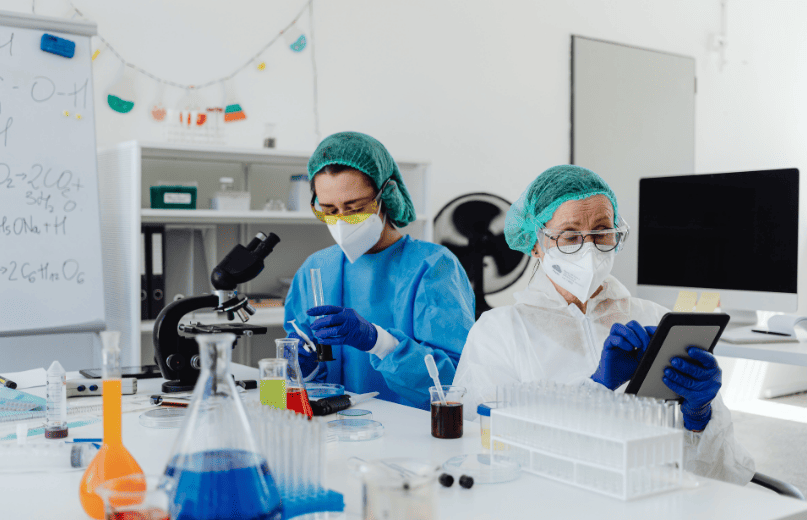
Understanding ILAC: The Global Framework for Laboratory Accreditation

The International Laboratory Accreditation Cooperation (ILAC) is the global authority responsible for establishing mutual recognition among national accreditation bodies that assess testing, calibration, inspection, and other conformity assessment activities. ILAC ensures that laboratory results issued under recognized accreditation are technically reliable and accepted across national borders, reducing duplication of testing and supporting trade based on trusted data.

Definition and Purpose of ILAC
ILAC, or the International Laboratory Accreditation Cooperation, is an international organization that coordinates the global framework for laboratory and inspection body accreditation. Its core purpose is to promote the mutual recognition of test and calibration data through a structured arrangement known as the ILAC Mutual Recognition Arrangement (MRA).
The ILAC framework provides the basis for evaluating the competence and impartiality of laboratories. It supports a unified global network where accreditation bodies assess laboratories according to international standards such as ISO/IEC 17025, ISO/IEC 17020, ISO 15189, and ISO 17034.
Through this structure, ILAC ensures that accredited laboratories operate with consistent technical standards, and that their data are recognized internationally by regulators, manufacturers, and certification bodies. This harmonization reduces technical barriers to trade and improves confidence in global testing and calibration results.
Structure and Membership of ILAC
ILAC operates as a global cooperation network connecting accreditation bodies, regional organizations, and stakeholders involved in laboratory and inspection accreditation. Its structure includes the General Assembly, which sets ILAC’s direction and policies, the Executive Committee, which manages coordination and implementation, and several Technical Committees that develop requirements and guidance for accreditation activities.
ILAC membership consists mainly of national accreditation bodies that have been evaluated and recognized under the ILAC Mutual Recognition Arrangement (MRA). Each signatory body, such as CNAS (China), UKAS (United Kingdom), or NATA (Australia), represents its economy within ILAC and operates in accordance with ISO/IEC 17011, the international standard for accrediting conformity assessment bodies.
ILAC also works closely with regional cooperation groups such as the Asia Pacific Accreditation Cooperation (APAC), European co-operation for Accreditation (EA), Inter American Accreditation Cooperation (IAAC), and African Accreditation Cooperation (AFRAC). These regional bodies manage peer evaluations and ensure that accreditation practices remain consistent across regions.
This coordinated structure enables ILAC to maintain global confidence and uniformity in accreditation systems and supports the international recognition of accredited laboratory results.
The ILAC Mutual Recognition Arrangement (MRA)
The ILAC Mutual Recognition Arrangement (MRA) is the central mechanism through which ILAC achieves global acceptance of accredited test and calibration data.
Purpose of the ILAC MRA
The ILAC MRA provides a framework for mutual recognition between national accreditation bodies. When an accreditation body becomes a signatory to the ILAC MRA, its accreditations are recognized by all other signatories worldwide. This mutual recognition allows test reports and calibration certificates issued by accredited laboratories to be accepted internationally without the need for re-testing or duplicate assessment.
Peer Evaluation System
To maintain the integrity of the ILAC MRA, signatory accreditation bodies undergo a peer evaluation process. This evaluation confirms compliance with ISO/IEC 17011 and ILAC-specific criteria. Evaluations are conducted by peers from other member bodies and regional cooperation groups.
The peer review process ensures that every accreditation body within ILAC operates under the same technical and procedural requirements. This creates confidence and equivalence among global signatories.
Scope of the ILAC MRA
The ILAC MRA covers several accreditation areas:
- Testing and Calibration Laboratories (ISO/IEC 17025)
- Inspection Bodies (ISO/IEC 17020)
- Proficiency Testing Providers (ISO/IEC 17043)
- Reference Material Producers (ISO 17034)
- Medical Laboratories (ISO 15189)
Each of these areas is linked to ILAC’s overarching principle: ensuring global acceptance of accredited data that supports trade, regulation, and consumer protection.
Relationship Between ILAC, ISO, and IAF
ILAC maintains close cooperation with other international organizations that govern conformity assessment. The most significant partnerships are with the International Organization for Standardization (ISO) and the International Accreditation Forum (IAF).
ISO and ILAC
ILAC works with ISO primarily through the ISO Committee on Conformity Assessment (CASCO), which develops international standards and guides for accreditation and certification. ILAC contributes technical expertise to ensure that standards like ISO/IEC 17025, ISO/IEC 17011, and ISO/IEC 17043 reflect practical requirements for laboratory accreditation.
ILAC and IAF Cooperation
While ILAC focuses on laboratories and inspection bodies, the IAF oversees accreditation for management system certification, product certification, and personnel certification.
Together, ILAC and IAF form the international recognition infrastructure for conformity assessment. They share a joint management committee and release ISO/ILAC/IAF communiqués to clarify the application of standards and support consistent interpretation worldwide.
Unified Conformity Assessment Network
This collaboration ensures that testing, inspection, and certification data accredited under either ILAC or IAF frameworks are mutually credible and traceable, strengthening confidence in products, services, and trade documentation across global markets.
ILAC’s Role in Supporting International Trade
A major function of ILAC is its contribution to international trade facilitation.
By promoting acceptance of accredited results, ILAC helps reduce technical barriers to trade (TBT) in accordance with the World Trade Organization (WTO) TBT Agreement. Many regulatory authorities and industry sectors rely on ILAC MRA-recognized reports to meet import, export, or certification requirements.
Key Trade Benefits
- Elimination of Retesting: Test data accepted across borders prevents redundant laboratory work.
- Regulatory Confidence: Authorities can rely on ILAC-recognized accreditation when approving imported products.
- Cost Efficiency: Reduces compliance costs for exporters and manufacturers.
- Time Efficiency: Accelerates product registration and certification processes.
- Market Access: Simplifies trade documentation where test reports or calibration certificates are required by regulators.
For example, a product tested by a CNAS-accredited laboratory in China, under ILAC MRA, can have its results accepted in Europe or the United States without additional testing. This uniform recognition mechanism directly supports international supply chains and compliance assurance.
Accreditation Standards Recognized Under ILAC
ILAC recognizes several international standards that define the competence of laboratories and related bodies. Each standard covers a specific domain of conformity assessment:
| Standard | Application Area |
| ISO/IEC 17025 | Testing and calibration laboratories |
| ISO/IEC 17020 | Inspection bodies |
| ISO/IEC 17043 | Proficiency testing providers |
| ISO 15189 | Medical laboratories |
| ISO 17034 | Reference material producers |
ISO/IEC 17025
This is the primary standard for laboratory competence. It defines requirements for impartiality, technical proficiency, measurement traceability, and result validity. Laboratories accredited under ISO/IEC 17025 have been independently assessed for their ability to generate reliable and repeatable results.
ISO/IEC 17020
Specifies requirements for inspection bodies performing examination of products, materials, installations, or systems. Accreditation ensures impartiality and technical consistency in inspection outcomes.
ISO/IEC 17043
Covers proficiency testing providers, confirming that organizations managing inter-laboratory comparisons maintain competence and quality control.
ISO 15189
Applies to medical laboratories, ensuring patient safety, accurate diagnostics, and quality assurance in medical testing.
ISO 17034
Establishes requirements for reference material producers, ensuring traceability of materials used in testing and calibration worldwide.
By aligning these standards under the ILAC framework, laboratories and associated organizations operate within a globally harmonized competence system.
ILAC Accreditation and the ILAC MRA Mark
Accredited laboratories that operate under an ILAC MRA signatory accreditation body may display the ILAC MRA Mark on their reports and certificates.
Purpose of the ILAC MRA Mark
The mark signifies that:
- The laboratory is accredited by a recognized ILAC MRA signatory.
- The results are accepted by other signatory economies under the mutual recognition arrangement.
- The accreditation process followed ISO/IEC 17011 requirements and ILAC policies.
Conditions for Use
Only accreditation bodies that are ILAC MRA signatories may authorize laboratories to use the ILAC MRA Mark. The mark must always appear together with the accreditation body’s logo and the laboratory’s unique accreditation number.
Correct use of the ILAC MRA Mark improves confidence and transparency in test and calibration reports and facilitates instant recognition of internationally accepted results.
How ILAC Ensures Confidence and Consistency
ILAC maintains global confidence in accreditation through a continuous system of evaluation, guidance, and monitoring.
Peer Evaluation Program
Accreditation bodies are periodically evaluated by peers from other signatory organizations. The evaluation examines compliance with ISO/IEC 17011, ILAC rules, and regional cooperation procedures.
Technical Committees
ILAC technical committees develop policy documents and guidance materials covering issues such as measurement uncertainty, traceability, and proficiency testing. These documents help ensure consistent interpretation of ISO standards among accreditation bodies.
Continuous Improvement
ILAC operates a feedback system through its committees and regional cooperations to address emerging technical challenges. This dynamic approach allows ILAC to adapt to new testing technologies, regulatory expectations, and trade environments while maintaining consistent quality across member economies.
How to Identify ILAC Signatory Accreditation Bodies
Organizations seeking to verify if an accreditation body is an ILAC signatory can consult the ILAC Signatory Search Tool available on the official website (https://ilac.org).
Verification steps:
- Visit the ILAC “Signatories” section.
- Select the relevant economy or region.
- Confirm that the accreditation body is listed as a current signatory for the required scope (testing, calibration, inspection, etc.).
- Review the scope and date of recognition.
This verification ensures that any laboratory accredited under that body operates under internationally recognized competence standards.
The International Laboratory Accreditation Cooperation (ILAC) provides the essential global framework for the recognition of laboratory and inspection competence.Through the ILAC Mutual Recognition Arrangement, laboratories accredited under signatory bodies such as CNAS, UKAS, or NATA gain international acceptance of their test and calibration data.
By aligning accreditation bodies under common standards like ISO/IEC 17025 and ensuring consistent peer evaluation, ILAC enables transparent, reliable, and traceable data exchange across borders. For regulators, industries, and consumers, ILAC remains the foundation of global trust in laboratory results and conformity assessment integrity
FAQs about ILAC
1. What is the International Laboratory Accreditation Cooperation (ILAC)?
The International Laboratory Accreditation Cooperation (ILAC) is a global network that coordinates the mutual recognition of laboratory and inspection body accreditation. It promotes confidence in test, calibration, and inspection results issued by accredited organizations worldwide.
2. What is the ILAC Mutual Recognition Arrangement (ILAC MRA)?
The ILAC MRA is a global agreement among national accreditation bodies that ensures test and calibration results issued under accreditation are accepted internationally. Signatories are evaluated under ISO/IEC 17011 to confirm they operate with consistent technical competence.
3. What standards are recognized under ILAC accreditation?
ILAC recognizes several international standards, including ISO/IEC 17025 for testing and calibration laboratories, ISO/IEC 17020 for inspection bodies, ISO/IEC 17043 for proficiency testing providers, ISO 15189 for medical laboratories, and ISO 17034 for reference material producers.
4. How does ILAC support international trade?
ILAC facilitates trade by reducing technical barriers and ensuring global acceptance of accredited test and calibration results. Reports issued under ILAC MRA signatories are recognized across member economies, minimizing the need for duplicate testing or certification.

 Request Free Sample Report
Request Free Sample Report